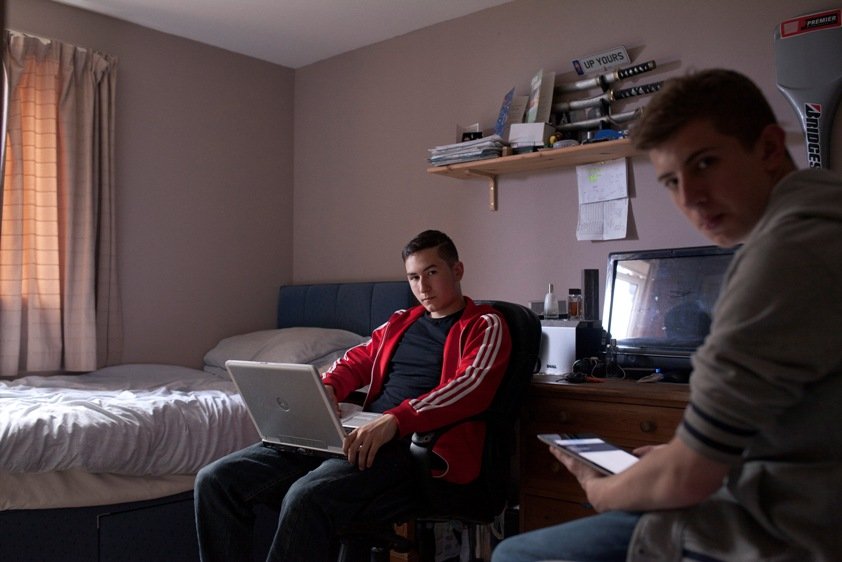
Seasoned documentary-maker Beeban Kidron’s film InRealLife is an investigation into the relationship of teenagers, digital technology and the Internet, taking as its subjects British teenagers in particular, and Western youth in general. It begins with an extended interview with two teenage boys talking about their use of porn, and how they remember pornographic images when having sex with real girls.
This matter-of-fact and disturbing interview is somewhat softened later when one of the interviewees, speaking alone, talks about how porn ruins love, and reflects on the way that girls he might want to date have often been written off as ‘slags’ and thus become untouchable. Other interviews include one with a gamer who dropped out of Oxford (‘as a result of his gaming’) about whether he is addicted and what impact this has on his life.
Kidron never appears in the film and acts as an off-camera interlocutor; while this is appropriate at one level, the film lacks a setup and the presence of an investigator with a subject they want to interrogate. The film also lacks a historical and societal context with respect to the adoption of digital and networked technologies and the contemporaneous social trends and changes.
This lack of context is somewhat made up for by the various experts Kidron interviews, including Microsoft researcher Danah Boyd, who notes that broad cultural values ‘migrated to the Internet’ (thus disappointing the early cultural aspirations), though MIT Media Lab co-founder and inspiration behind One Laptop Per Child maven Nicholas Negroponte wrongly talks about ‘the Internet becoming the basis of society’. Shallows author Nick Carr rightly critiques the ‘digital natives’ trope, noting it assumes a certain uniformity about adults, and ignores that adults are often obsessed with technology, while going easy on kids by assuming they are at home with technologies that are actually changing them.
How technology does, in the longer term, shape social behaviour, is not well addressed otherwise: one interviewee believes kids consider making phone calls ‘inefficient’, where it’s more likely they (like adults) tend to hide behind text messages. Another interviewee talks about the ‘dopamine reaction’ seen in ‘Internet users’ as if we are a pack of lab rats. More thoughtfully, social science and technology professor Sherry Turkle discusses the need for private reflective space in which we risk boredom and from which we then turn to others.
The film has a dystopic feel. Of course, this is appropriate rhetorically if one is seeking out the ‘dark underbelly of social use of the network’ (not that this is a new quest) but it would be appropriate to present a counterpoint around the huge benefits we have gained from these technologies, not least in communications, information retrieval and commerce. (And Kidron is clear about this value in her introduction to the film, noting that ‘I was one of those who believed in the promise of the Internet and its power to deliver previously unimaginable ways of communicating’.) It fails to show any of its subjects in a positive light, and one is interviewed almost in the dark (perhaps for the sake of anonymity), adding to its gloom.
Moreover, when Kidron moves to the theme of where our data is and its ownership by corporations, and the nature of data interchanges and centres – rightly debunking ‘the cloud’ meme – the audio and imagery become darker still with un-peopled spaces, endless corridors and racks, flashing lights and snaking cables.
InRealLife is in many ways a valuable contribution to the debate about social behaviour and technology but there is so much more significant work to do on the dialectics of their relationship.
The InRealLife site includes a trailer and links to film downloads, and recommended reading
[Notes]
